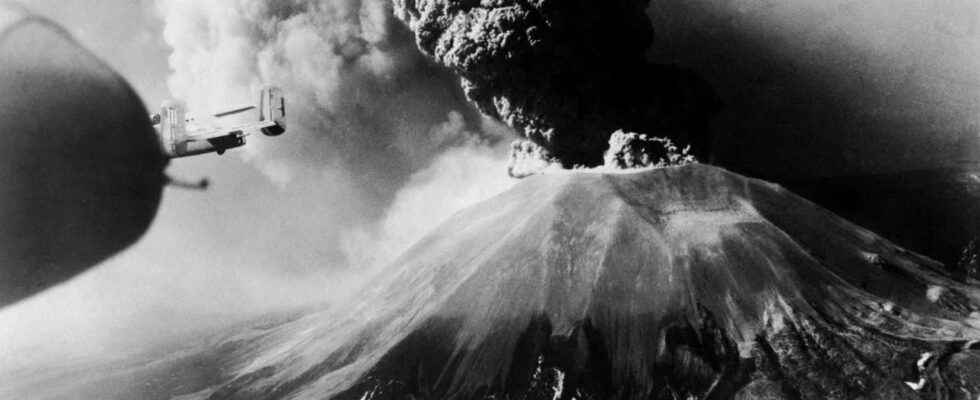You will also be interested
[EN VIDÉO] Interview: what is the role of volcanoes? How do volcanoes contribute to the Earth’s ecosystem and how do they benefit the planet? Answer with volcanologist Jacques-Marie Bardintzeff. © Futura
The last eruption of Vesuvius took place in 1944, right in the middle of the Second World War. The Neapolitan province was then occupied by American forces who made the volcanic observatory of Vesuvius their headquarters. Fortunately, Giuseppe Imbothe director at the time, was able to stay on site and thus follow this eruption.
The eruptive activity actually began in 1913. For thirty years, it remained very modest and localized in the summit crater of the volcano. Over time, it filled up, so much so that at the beginning of 1944, the cone formed around the eruptive mouth protruded from the edges of the crater. It collapsed between March 12 and 13, along with an intensification of seismic activity, signs that Giuseppe Imbò identified as precursors of greater activity to come.
On March 18, lava overflowed from the crater and formed flows on the eastern, northern, and western slopes of the volcano. It was the one to the north that was best fed: it flowed into the valley between Vesuvius and Monte Somma, a remnant of the old volcano that collapsed in 79 AD, and then took it west. and populated areas. The 12,000 inhabitants of the villages of San Sebastiano al Vesuvio and Massa di Somma were then evacuated, with the help of American soldiers, before the lava partially destroyed them. Norman Lewisan English intelligence agent, then described the scene: The lava was advancing quietly along the main road, and about fifty meters from the edge of this heap slowly advancing, a crowd of several hundred people, mostly dressed in black, prayed on their knees. […] The lava was moving at the speed of a few meters per hour, and had covered half of the city with a thickness of about 10 meters. »
After the flows, an explosive activity!
From March 21, activity intensified at the top of the volcano with fountains of wash very intense for nearly 24 hours, which led to the cessation of lava flows on March 22, after more than seven kilometers of travel. The seismic activity was then so intense that at the observatory, you had to hold on to walk! During the following days, this explosive activity formed imposing columns of ash more than five kilometers high, bent by the winds towards the southeast. The lapilli and ashes of this activity fell in a wide area. At the foot of the volcano, in Terzigno, these products accumulated over about 80 centimeters, seriously damaging many American bomber planes. At 20 kilometers from the summit, the deposit still reached 50 centimeters. In fact, many rooftops houses collapsed in this area, causing about twenty victims. Some of the ashes even reached Albania, more than 450 kilometers from the volcano!
The explosions and emissions ashes lasted until March 29, when a new crater could be observed at the top of the volcano, 550 meters wide and 200 to 300 meters deep. And if the fumarolic activity has since diminished, it is the crater that we know today!
With a volume issued sixty times less than the eruption of 79 AD. J.-C., this 1944 eruption is quite modest. And even if its consequences are not negligible, they are quite minimal compared to those that such an eruption would produce today. Because the Neapolitan metropolis has since seriously expanded and adjoins the surroundings of Vesuvius… Here is why Vesuvius is a volcanoes the most dangerous on our planet!
This article is taken from a story by Maddalena De Lucia and Giovanni Pasquale Ricciardi which you can find on this link: Quello spettrale Cesare dalla testa di cane. Vesuvio, 1944 “.
Interested in what you just read?
